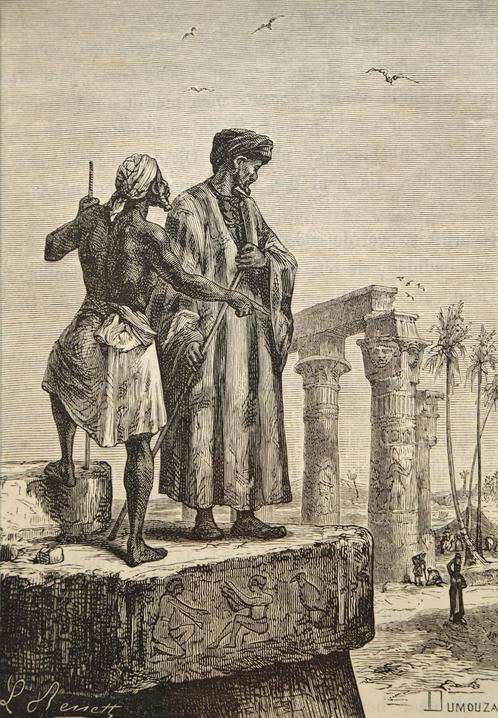Get ready for the ultimate road trip! Meet Abu Abdullah Muhammad ibn Battuta, the African explorer who traveled further and for a longer time than Marco Polo. He was born in Tangier, Morocco in 1304. After receiving a formal education in Islamic law, he chose to travel and set out on a journey that would last for almost 30 years and cover over 75,000 miles! That’s 5 times as far as Marco Polo traveled! When he was 21 years old, he set off from his hometown initially on a hajj (pilgrimage) to Mecca, a journey that took him 16 months. However, after the hajj, he did not return home but rather continued traveling for nearly another 28 years. To reduce the risk of being attacked, he usually chose to join a caravan.

He began his voyage by exploring the Middle East and before sailing down the Red Sea to Mecca. He crossed the Arabian Desert and traveled to Iraq and Iran. He later sailed down the Red Sea to Aden and then to Tanzania. He visited India, where he was greeted open heartedly by the Sultan of Delhi. In Delhi, ibn Battuta was appointed to the position of a judge. He stayed in India for a period of 8 years and then left for China. After that, he went south, crossed the Sahara desert, and visited the West African kingdom of Mali. Finally, Battuta returned home to Tangier in 1355.

Ibn Battuta's journey was not just about adventure. He was also a scholar, a judge and an explorer, traveling more than any other explorer in pre-modern history. He used his travels to study the laws and customs of the places he visited throughout North Africa, West Africa, the Middle East, Central Asia, and as far as China and India. He visited over 40 modern-day countries, and he did it all without Google Maps or a guidebook!
During his journey, ibn Battuta faced many challenges – from wars, diseases, and treacherous terrain – but he was determined to see the world and nothing was going to stop him. He crossed deserts on camels, sailed on ships, and even rode elephants! He also made some pretty impressive friends along the way, including the Sultan of Delhi and the Emperor of China.
Ibn Battuta's journey was not just about adventure. He also made valuable contributions to the field of geography and ethnography by providing detailed descriptions of the places he visited and the people he met. He wrote a book about his travels titled A Gift to Those Who Contemplate the Wonders of Cities and the Marvels of Travelling, commonly known as The Rihla, which is considered one of the most important works of travel literature in history.
After the completion of the Rihla in 1355, he was appointed a judge in Morocco where he served until he died in 1368.
Ibn's Travel Map
Materials Needed:
- World Map (included)
- Markers, Crayons, Pens or Pencils
- Small stickers
- Arrrgh Mighty Observation Journal (optional)
What can you spy with your explorer's eye? Who’s ready to travel the globe? Let’s go!
Instructions:
Explain to children that Ibn Battuta was a 14th-century Moroccan Berber scholar, explorer, and traveler. He is considered one of the greatest travelers of all time, having traveled over 75,000 miles, visiting the equivalent of 44 modern countries during his lifetime.
- Pull out the map and stickers.
- Color in all of the labeled countries in Africa, Asia, and Europe
- Place stickers on the countries that you want to travel to.
- Optional: Pull out your Arrrgh Mighty Observation Journal and write the new countries you learned about.
- How many countries were in Africa?
- How many countries were in Asia?
- How many countries were in Europe?
Explain that these are a few countries that Ibn Battuta explored in his lifetime. It covers a lot of the world right?!

